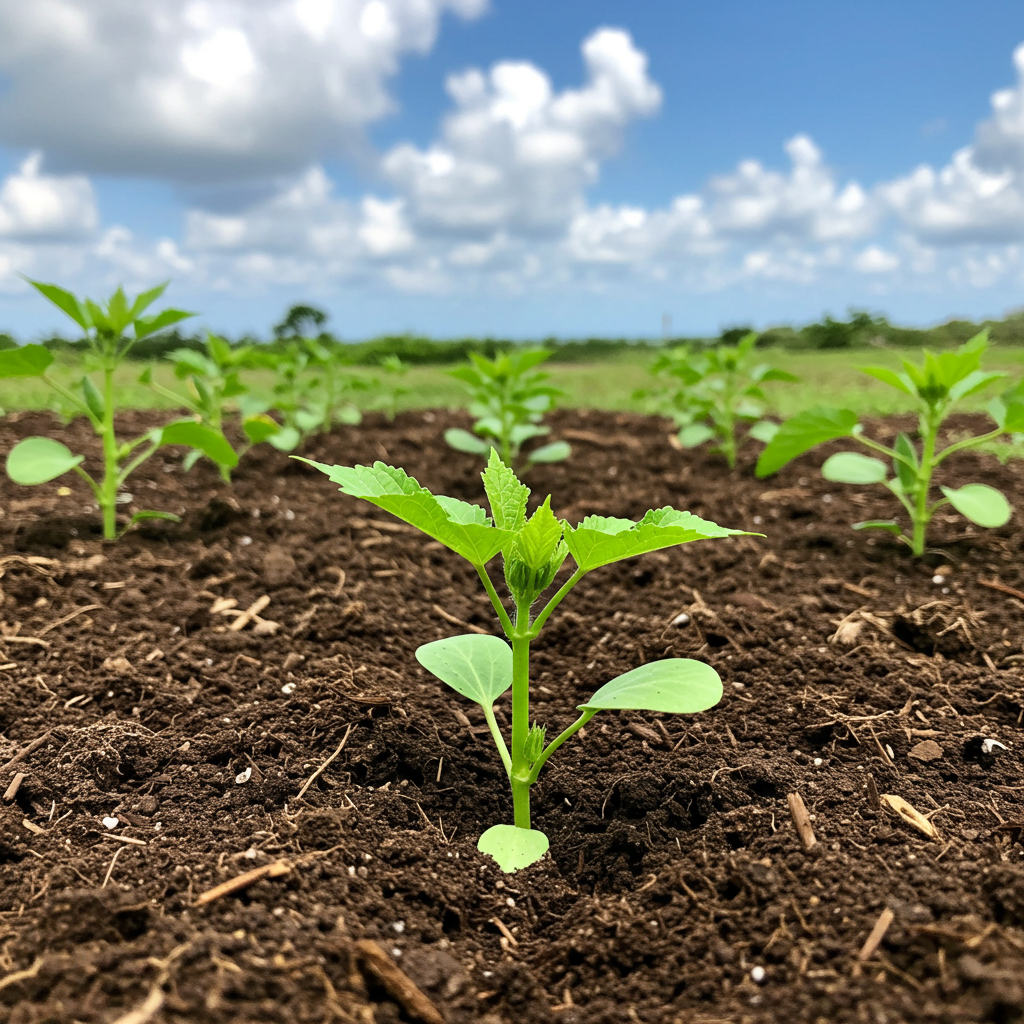Knowing the best time to plant okra in Florida is crucial for a successful harvest. This guide covers everything from ideal planting times and soil preparation to ongoing care and pest control, ensuring you achieve stunning results in your Florida garden.

Introduction: Growing Okra in the Sunshine State
Okra, a heat-loving vegetable, thrives in Florida’s warm climate. However, understanding the specific planting times and growing conditions is essential for maximizing your yield. This comprehensive guide will equip you with the knowledge and techniques needed to cultivate a thriving okra patch, whether you’re a seasoned gardener or just starting.
When to Plant Okra in Florida: Timing is Key
Florida’s subtropical climate allows for a longer growing season for okra compared to other regions. You can essentially plant okra twice a year:
Spring Planting: The ideal time for spring planting is after the last frost, typically between February and April in North Florida, and January and March in South and Central Florida. Aim for soil temperatures consistently above 65°F (18°C).
Fall Planting: For a fall harvest, plant okra in August or September, allowing enough time for the plants to mature before the first frost arrives.
Choosing the Right Okra Variety for Florida
Selecting the right okra variety can significantly impact your harvest. Consider these popular options for Florida gardens:
Clemson Spineless: A classic variety known for its high yield and spineless pods. It’s well-suited to Florida’s warm climate.
Emerald: Another spineless variety that produces tender, flavorful pods.
Burgundy: Offers attractive deep red pods that add a splash of color to your garden.
Annie Oakley II: A hybrid variety that displays excellent disease resistance.
Preparing the Soil for Okra: A Foundation for Success
Okra prefers well-drained, fertile soil with a slightly acidic pH (6.0-6.8). Before planting, prepare the soil by:
Amending with Compost: Add compost or other organic matter to improve soil structure and fertility.
Testing the pH: Ensure the soil pH is within the optimal range. Adjust with lime if necessary.
Creating Raised Beds: Consider raised beds for improved drainage and easier weed control.
Planting Okra Seeds: Tips and Techniques
Direct Sowing: Okra seeds can be sown directly into the garden.
Seed Depth: Plant seeds about 1 inch deep and 12-18 inches apart.
Watering: Keep the soil consistently moist, especially during germination.
Thinning Seedlings: Thin seedlings to the recommended spacing once they reach a few inches tall.
Caring for Your Okra Plants: Nurturing Growth
Watering: Okra requires regular watering, especially during dry periods. Aim for about 1 inch of water per week.
Fertilizing: Feed your okra plants with a balanced fertilizer every 4-6 weeks.
Weed Control: Keep the area around your okra plants weed-free to minimize competition for nutrients.
Mulching: Apply a layer of mulch to help retain moisture, suppress weeds, and regulate soil temperature.
Dealing with Pests and Diseases: Protecting Your Harvest
Okra is relatively pest-free, but be on the lookout for:
Aphids: Control aphids with insecticidal soap or neem oil.
Stink Bugs: Handpick stink bugs or use an approved insecticide.
Root-knot Nematodes: Crop rotation and soil solarization can help control nematodes.
Common diseases include:
Fusarium Wilt: Choose resistant varieties and practice crop rotation.
Cercospora Leaf Spot: Improve air circulation and avoid overhead watering.
Harvesting Okra: Reaping the Rewards
Okra pods are ready for harvest when they reach 2-4 inches long. Harvest frequently to encourage continued production. Use a sharp knife or pruning shears to cut the pods from the plant.
FAQs: Addressing Common Okra Growing Questions
Q: How long does it take for okra to mature?
A: Okra typically takes 50-60 days to mature from seed.
Q: How often should I water my okra plants?
A: Water okra regularly, aiming for about 1 inch of water per week.
Q: Why are my okra leaves turning yellow?
A: Yellowing leaves can indicate nutrient deficiencies, overwatering, or pest infestations.
Q: Can I grow okra in containers?
A: Yes, okra can be grown in containers, provided they are large enough (at least 5 gallons).
Beyond the Garden: Enjoying Your Okra Harvest
Okra is a versatile vegetable that can be enjoyed in various dishes. Whether fried, stewed, grilled, or pickled, okra’s unique flavor and texture add a delightful touch to any meal.
Conclusion: Cultivating Okra Success in Florida
Planting okra in Florida can be a rewarding experience. By following the guidelines outlined in this guide, you can cultivate a thriving okra patch and enjoy a bountiful harvest of this delicious and nutritious vegetable. From selecting the right variety and preparing the soil to providing ongoing care and addressing potential pests and diseases, each step plays a crucial role in achieving stunning results in your Florida garden. So, get your garden ready and enjoy the taste of fresh, homegrown okra!

